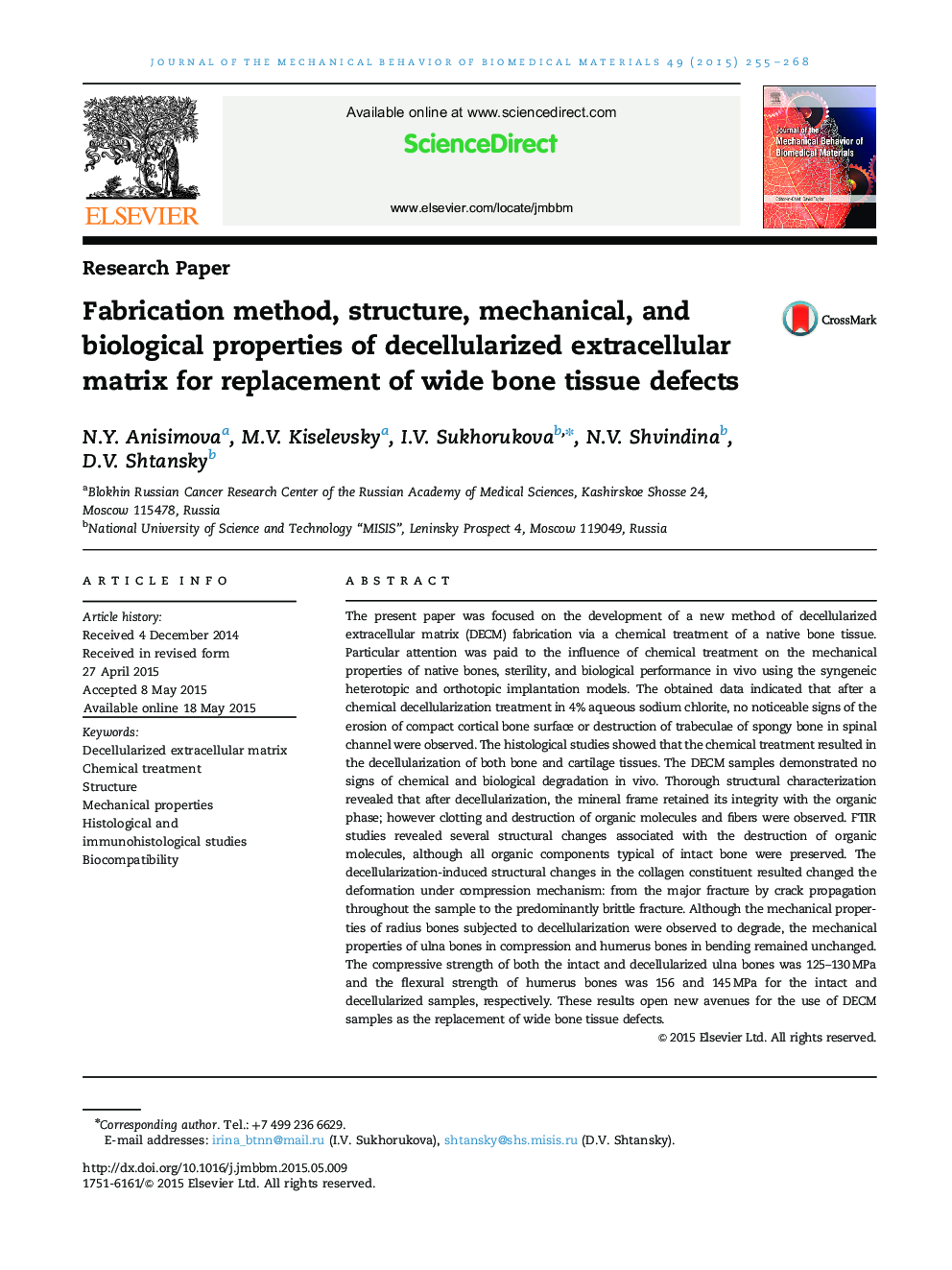| کد مقاله | کد نشریه | سال انتشار | مقاله انگلیسی | نسخه تمام متن |
|---|---|---|---|---|
| 810600 | 1469096 | 2015 | 14 صفحه PDF | دانلود رایگان |

• New method of decellularized extracellular matrix (DECM) fabrication.
• Sterile DECM samples with no signs of chemical and biological degradation in vivo.
• Decellularization results in change of quantity and quality of collagen component in DECM.
• Mechanical properties of ulna and humerus bones remain unchanged after decellularization.
The present paper was focused on the development of a new method of decellularized extracellular matrix (DECM) fabrication via a chemical treatment of a native bone tissue. Particular attention was paid to the influence of chemical treatment on the mechanical properties of native bones, sterility, and biological performance in vivo using the syngeneic heterotopic and orthotopic implantation models. The obtained data indicated that after a chemical decellularization treatment in 4% aqueous sodium chlorite, no noticeable signs of the erosion of compact cortical bone surface or destruction of trabeculae of spongy bone in spinal channel were observed. The histological studies showed that the chemical treatment resulted in the decellularization of both bone and cartilage tissues. The DECM samples demonstrated no signs of chemical and biological degradation in vivo. Thorough structural characterization revealed that after decellularization, the mineral frame retained its integrity with the organic phase; however clotting and destruction of organic molecules and fibers were observed. FTIR studies revealed several structural changes associated with the destruction of organic molecules, although all organic components typical of intact bone were preserved. The decellularization-induced structural changes in the collagen constituent resulted changed the deformation under compression mechanism: from the major fracture by crack propagation throughout the sample to the predominantly brittle fracture. Although the mechanical properties of radius bones subjected to decellularization were observed to degrade, the mechanical properties of ulna bones in compression and humerus bones in bending remained unchanged. The compressive strength of both the intact and decellularized ulna bones was 125–130 MPa and the flexural strength of humerus bones was 156 and 145 MPa for the intact and decellularized samples, respectively. These results open new avenues for the use of DECM samples as the replacement of wide bone tissue defects.
Figure optionsDownload high-quality image (164 K)Download as PowerPoint slide
Journal: Journal of the Mechanical Behavior of Biomedical Materials - Volume 49, September 2015, Pages 255–268